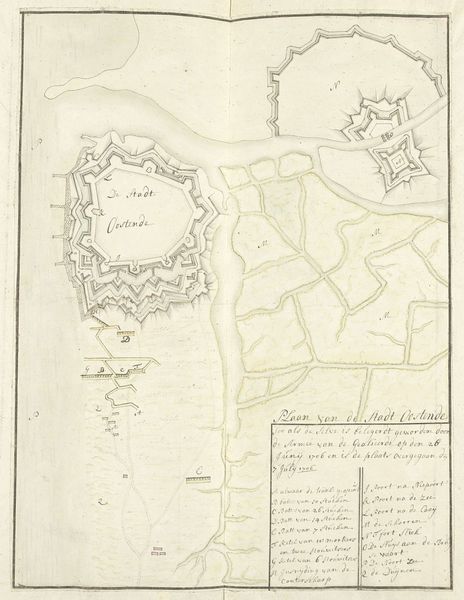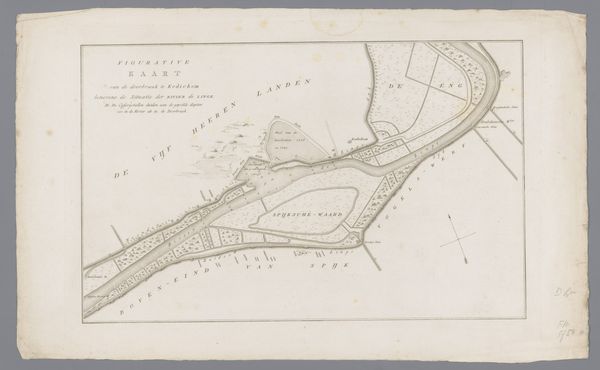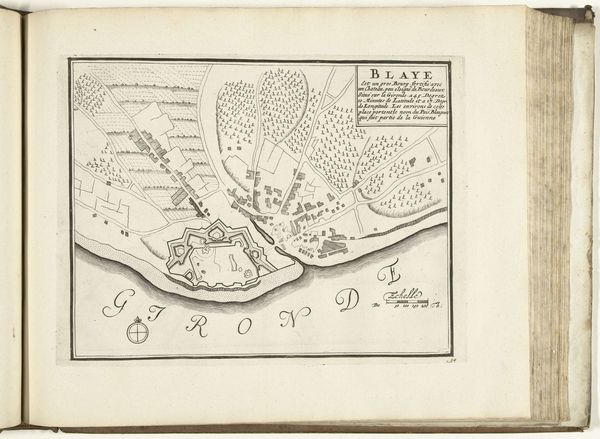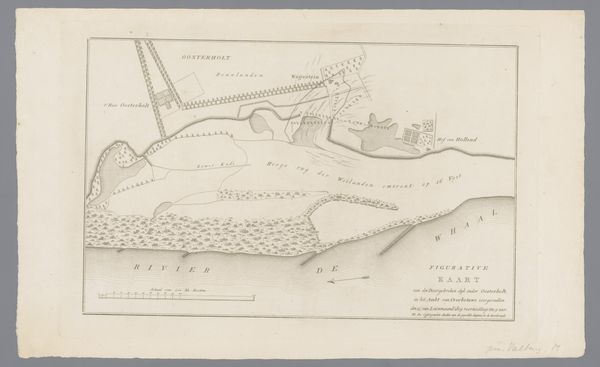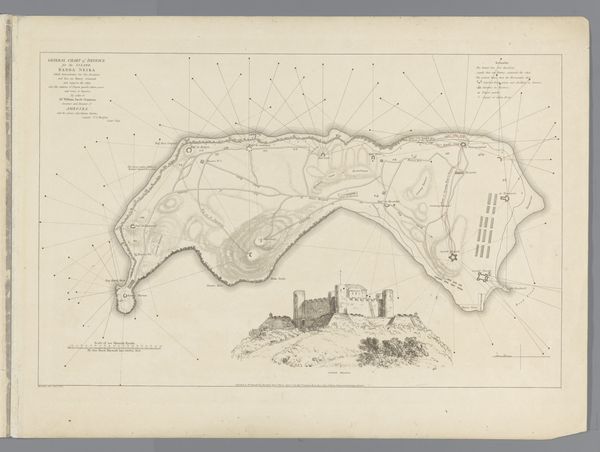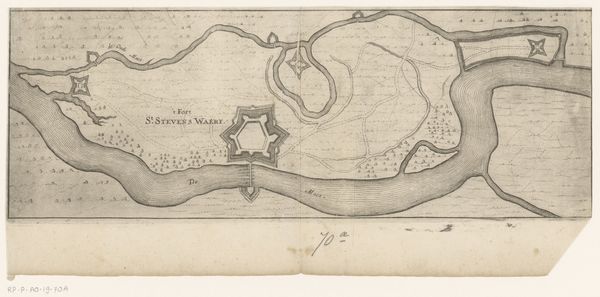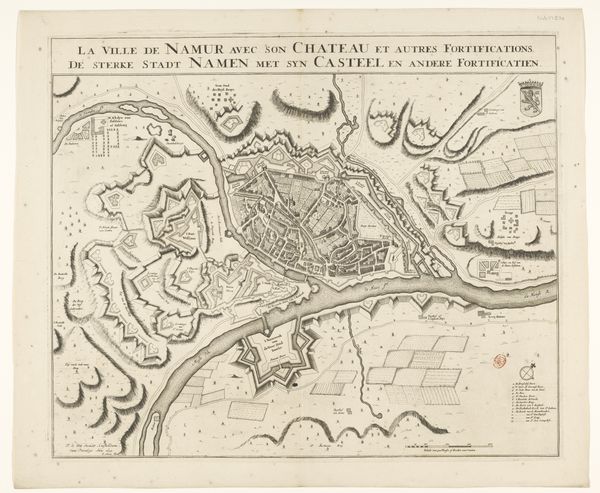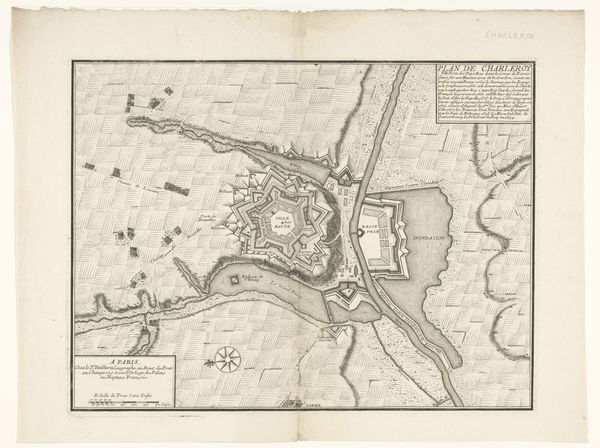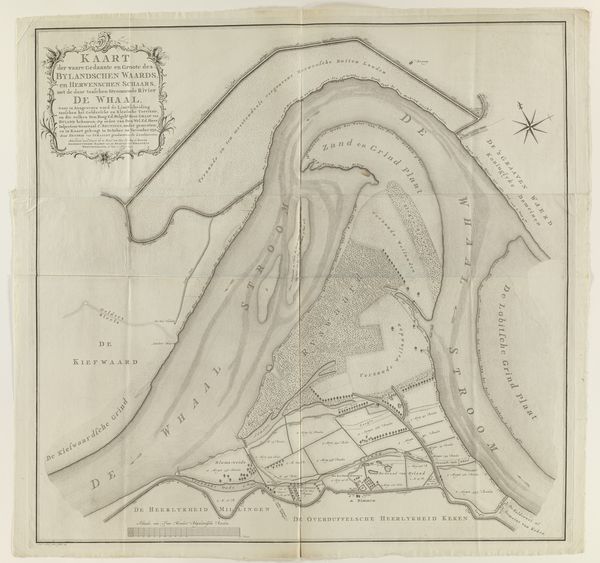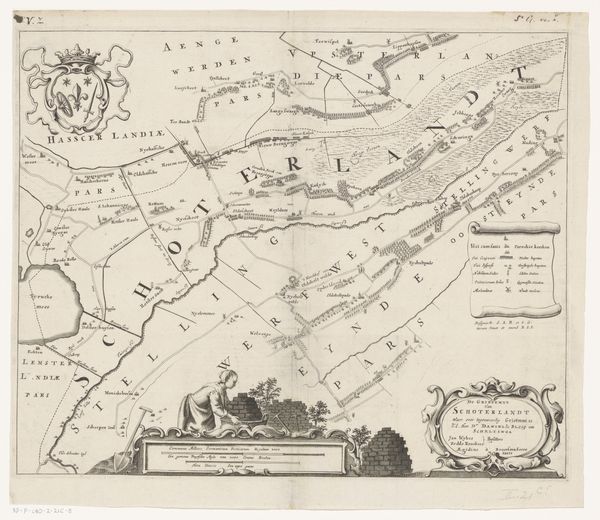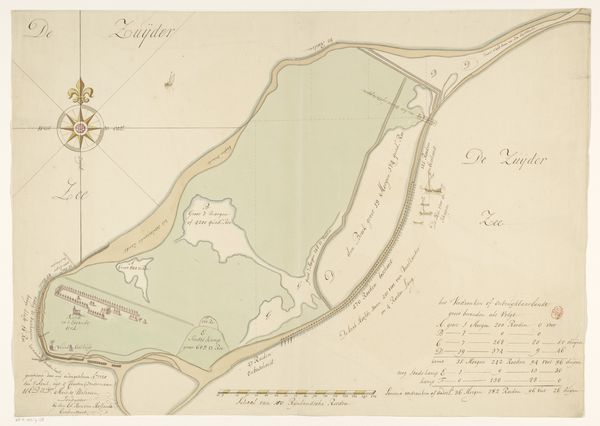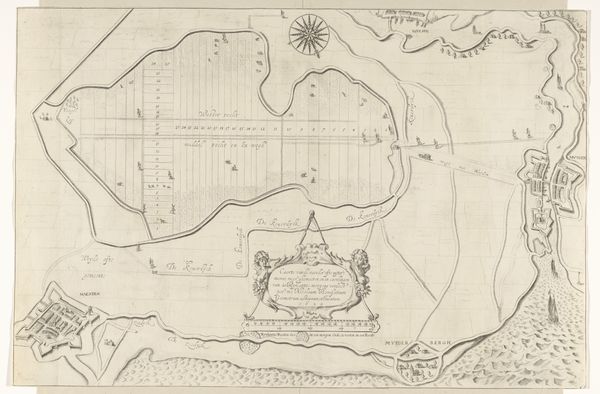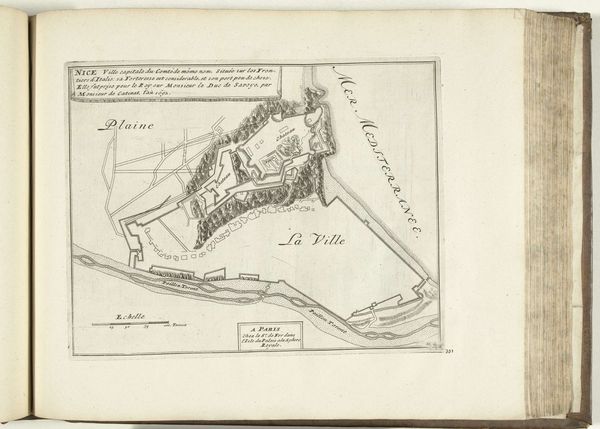
drawing, print, etching
#
drawing
# print
#
etching
#
landscape
#
etching
#
cityscape
#
history-painting
Dimensions: height 540 mm, width 984 mm
Copyright: Rijks Museum: Open Domain
This is Cornelis van Baarsel's map of the island of Urk. Note the church, proudly displayed with a weather vane atop its tower. Such vanes are more than mere indicators of wind direction; they are potent symbols. In ancient times, the rooster, often adorning these vanes, was associated with vigilance and the rising sun, embodying rebirth and resurrection. We see echoes of this symbolism across cultures. Consider the watchful rooster atop church steeples throughout Europe, a Christian adaptation of pagan symbols meant to ward off evil and herald the dawn of a new spiritual day. The choice of the rooster speaks to a deep, subconscious yearning for protection and guidance, a collective memory embedded in our cultural psyche. The evolution of this symbol reveals our complex relationship with belief and security. Over time, the weather vane has transformed, sometimes losing its religious undertones, yet retaining its essence as a marker of place and direction. The presence of this symbol is a testament to how we, as humans, continually reinvent and reinvest objects with layers of significance. The weather vane, simple as it may seem, is part of our ongoing dialogue between the past and the present.
Comments
No comments
Be the first to comment and join the conversation on the ultimate creative platform.
